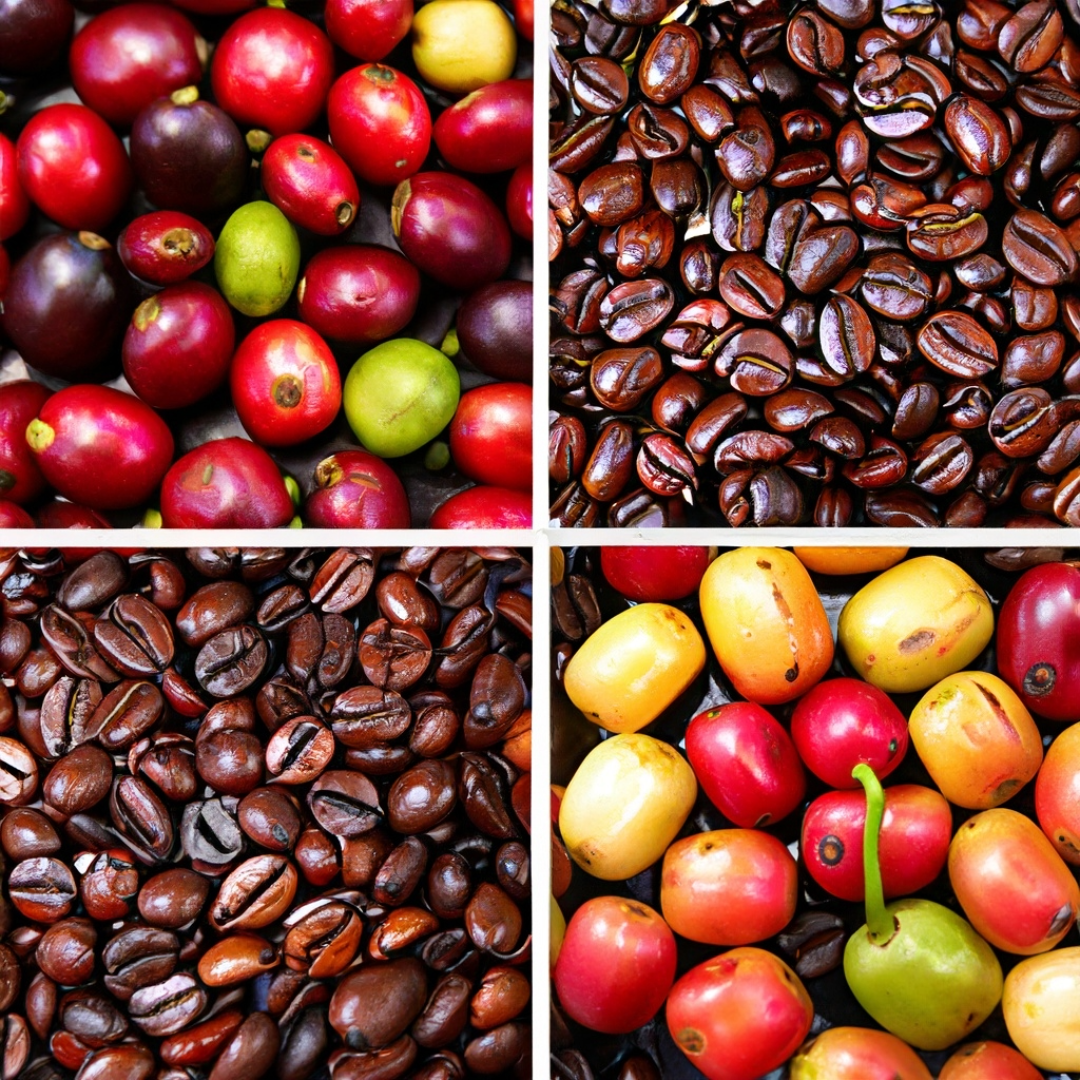
Coffee and Its Bean Varieties: What Sets Them Apart?
Share
When you sip on your morning coffee, have you ever wondered why it tastes the way it does? The secret lies in the coffee bean varieties used to brew that perfect cup. There are two primary types of coffee beans that dominate the market: Arabica and Robusta. Each variety has its unique characteristics, flavors, and origins, making them stand apart in the vast world of coffee. In this blog post, we will explore the differences between Arabica and Robusta beans, their pros and cons, prominent flavor attributes, and the countries that produce and consume these beans.
Arabica Beans: The Elegance in Your Cup
Arabica beans (Coffea Arabica) are often regarded as the superior choice for specialty coffee due to their exceptional flavor profile and complex aromatics. They make up around 60-70% of the world's coffee production and are grown at higher altitudes in regions with a cooler climate. Here's what sets them apart:
Pros:
- Flavor Complexity: Arabica beans offer a wide range of flavors, from fruity and floral to nutty and chocolaty, providing a delightful and nuanced experience for coffee enthusiasts.
- Acidity: Arabica beans generally have higher acidity, giving your coffee a bright and lively taste that enhances the overall complexity.
- Lower Caffeine Content: If you prefer a caffeine kick, Arabica is the way to go, as it contains around 1.2-1.5% caffeine content.
Cons:
- Higher Cost: Arabica beans often come with a higher price tag compared to Robusta beans, partly due to their more delicate growing conditions and susceptibility to diseases.
- Vulnerable to Pests: The Arabica plant is more susceptible to pests and environmental stresses, making it a challenging crop to grow in some regions.
Prominent Flavor Attributes: Depending on the origin and processing, Arabica beans can exhibit flavors like blueberry, jasmine, caramel, chocolate, and even wine-like characteristics.
Largest Arabica Producers: The leading Arabica coffee-producing countries are Brazil, Colombia, Ethiopia, Honduras, and Peru.
Robusta Beans: The Bold and Robust Choice
Robusta beans (Coffea canephora) are known for their strong and robust flavor profile. They are hardier plants that thrive at lower altitudes and warmer climates, making them easier to cultivate in various regions.
Pros:
- Higher Caffeine Content: Robusta beans contain approximately 2.2-2.7% caffeine content, giving you that extra kick to jumpstart your day.
- Resistance to Pests: Robusta plants are more robust (as the name suggests) and resistant to diseases and pests, making them a reliable choice for coffee farmers.
- Crema Production: Due to its higher caffeine content and different chemical composition, Robusta is often used in espresso blends to create a thick and long-lasting crema.
Cons:
- Bitterness and Astringency: Robusta beans can have a harsher, more bitter taste with less complexity compared to Arabica beans.
- Limited Flavor Profile: While Robusta can exhibit some earthy and woody notes, it lacks the diverse flavor range of Arabica beans.
Prominent Flavor Attributes: Robusta beans are known for their bold, nutty, and sometimes even peanut-like flavors.
Largest Robusta Producers: Vietnam, Brazil, Indonesia, and India are some of the largest producers of Robusta coffee.
Choosing Your Perfect Cup: Finding the Balance
Ultimately, the choice between Arabica and Robusta beans comes down to personal preference. If you crave a coffee with a sophisticated and diverse flavor profile, Arabica beans may be your best bet. On the other hand, if you prefer a bolder, bitter cup with a thick crema, Robusta is the way to go.
It's essential to explore different coffee origins, processing methods, and roasting styles to find the perfect cup that suits your taste buds. Additionally, many specialty blends combine the best of both worlds, marrying the elegance of Arabica with the boldness of Robusta to create a well-balanced and unique coffee experience.
So, the next time you take a sip of your favorite brew, take a moment to appreciate the art and science behind the coffee bean varieties that make it all possible. Cheers to the world of coffee, where every cup is an adventure!
